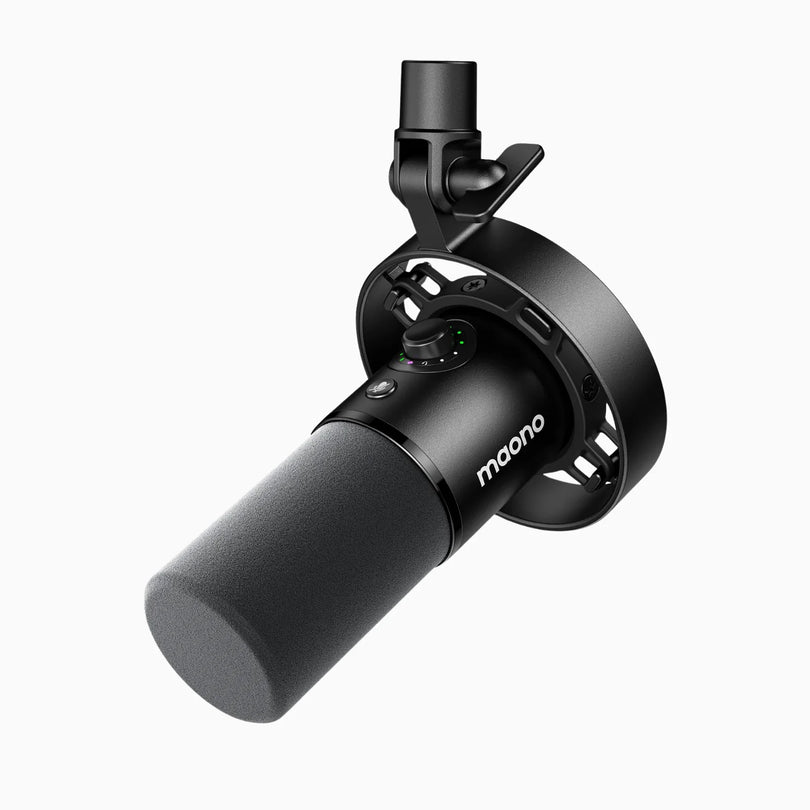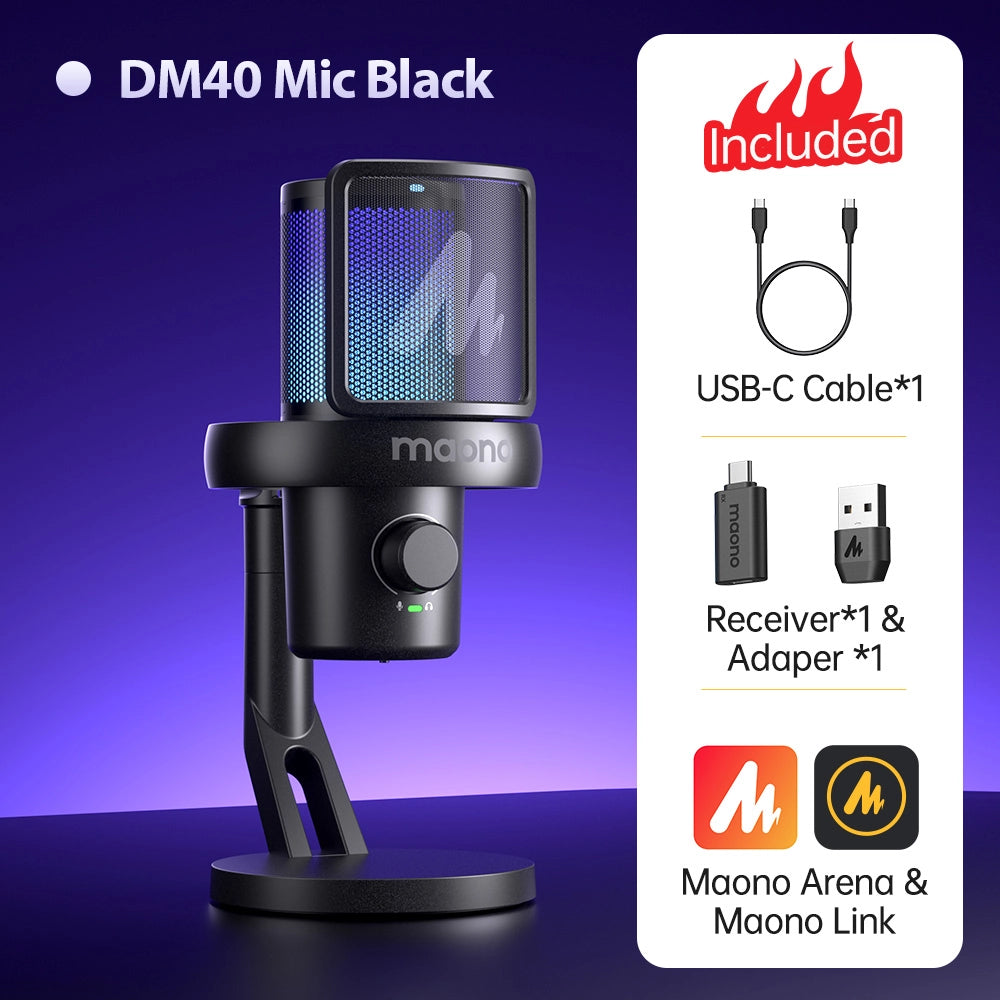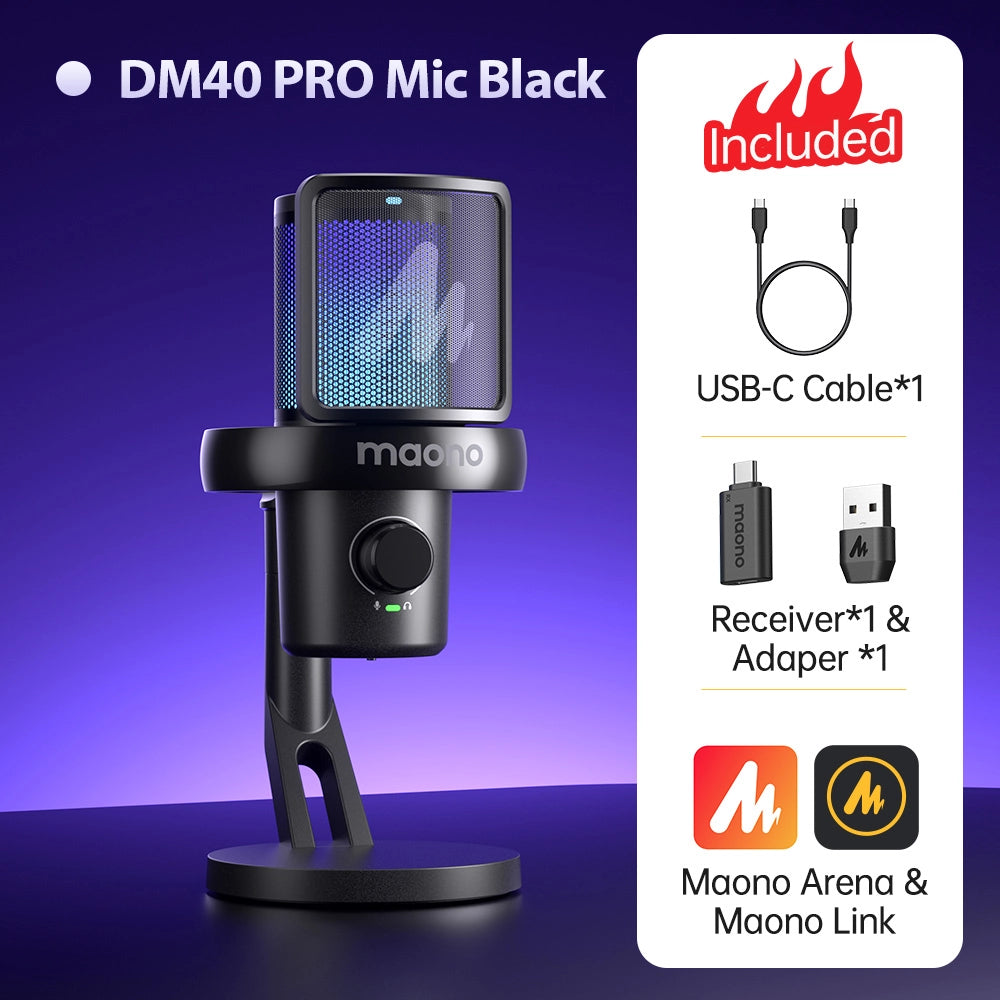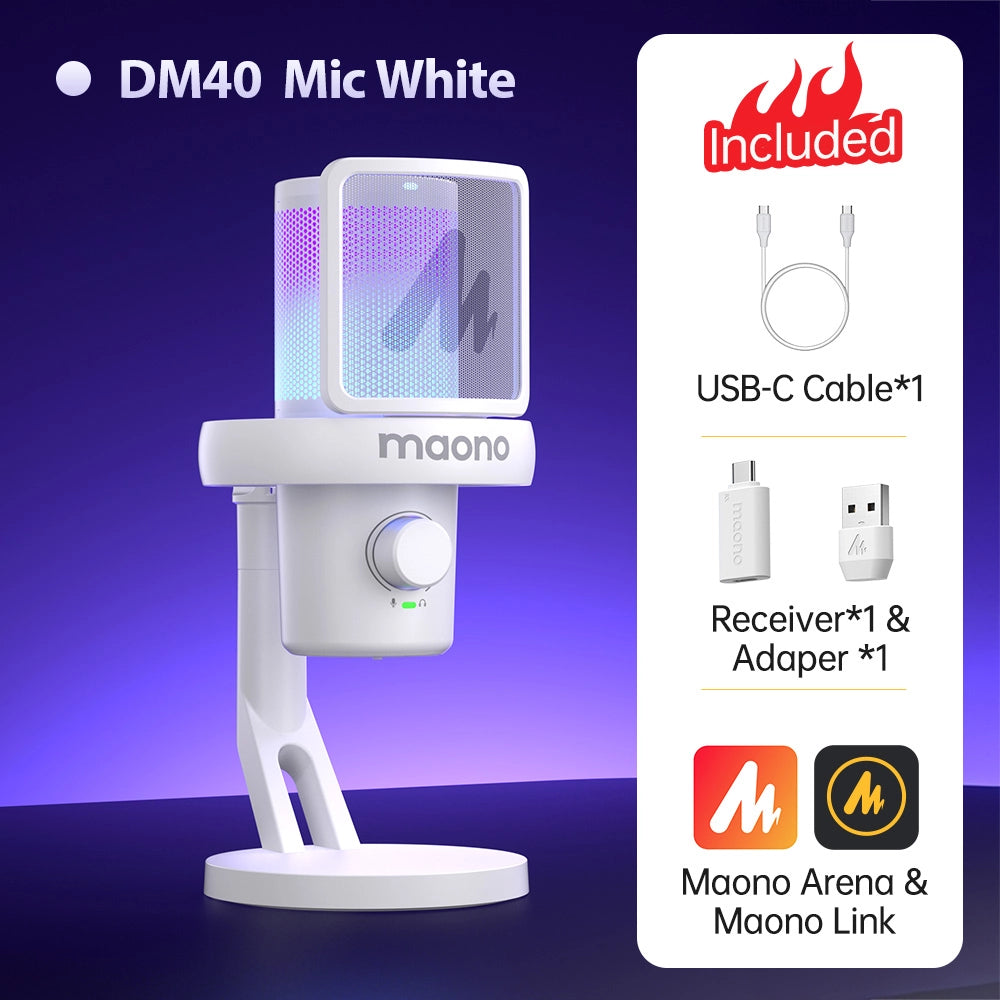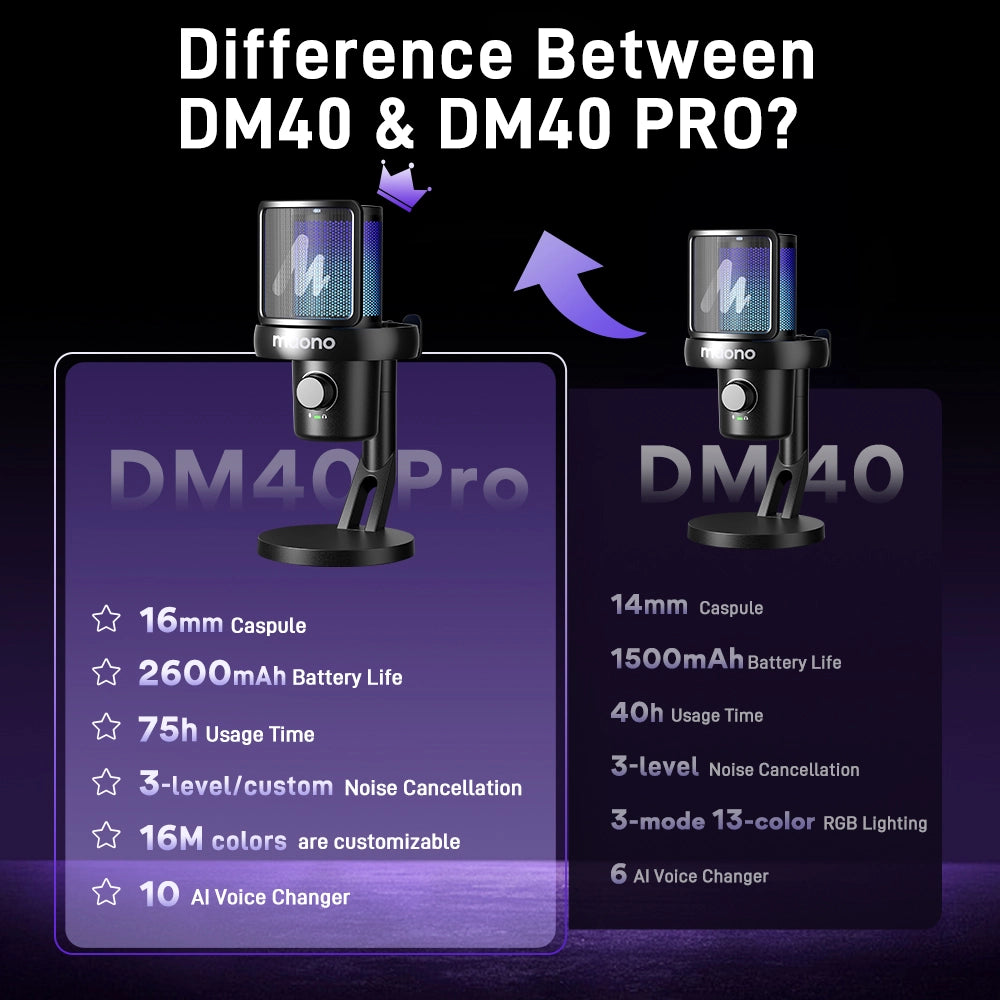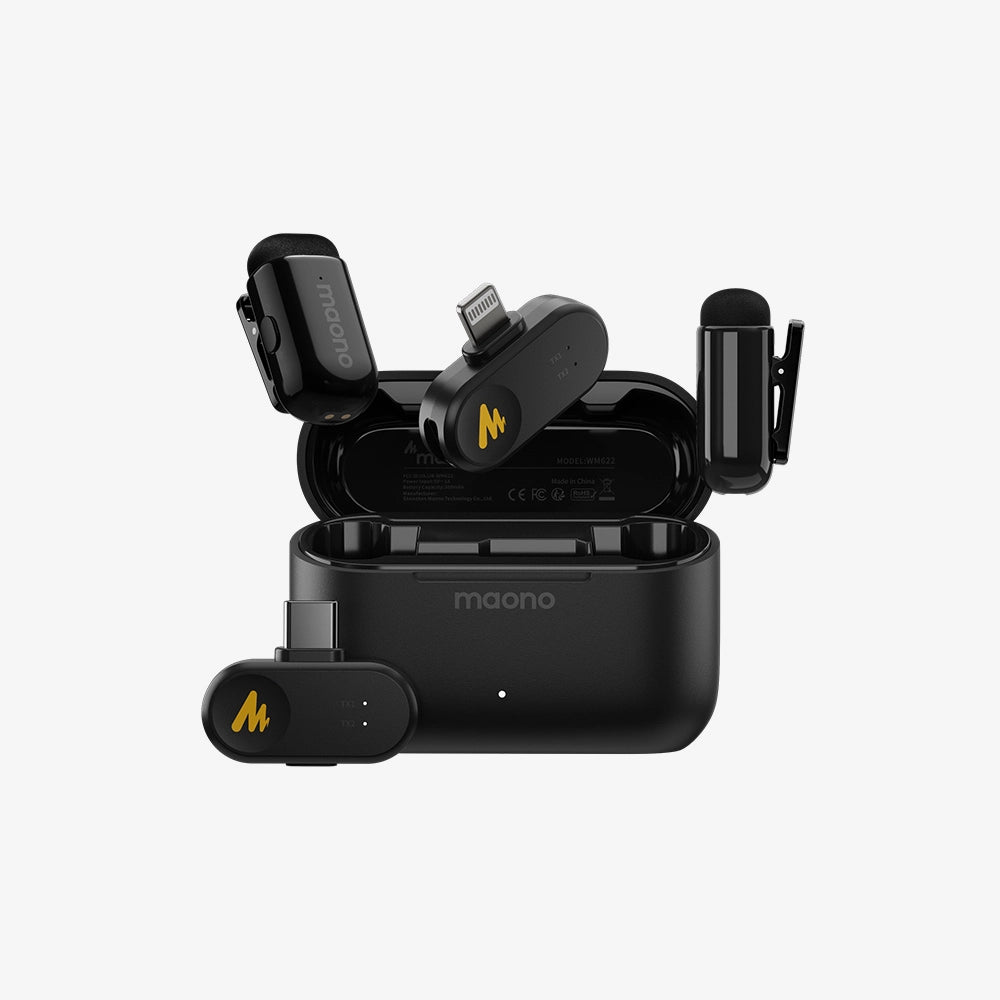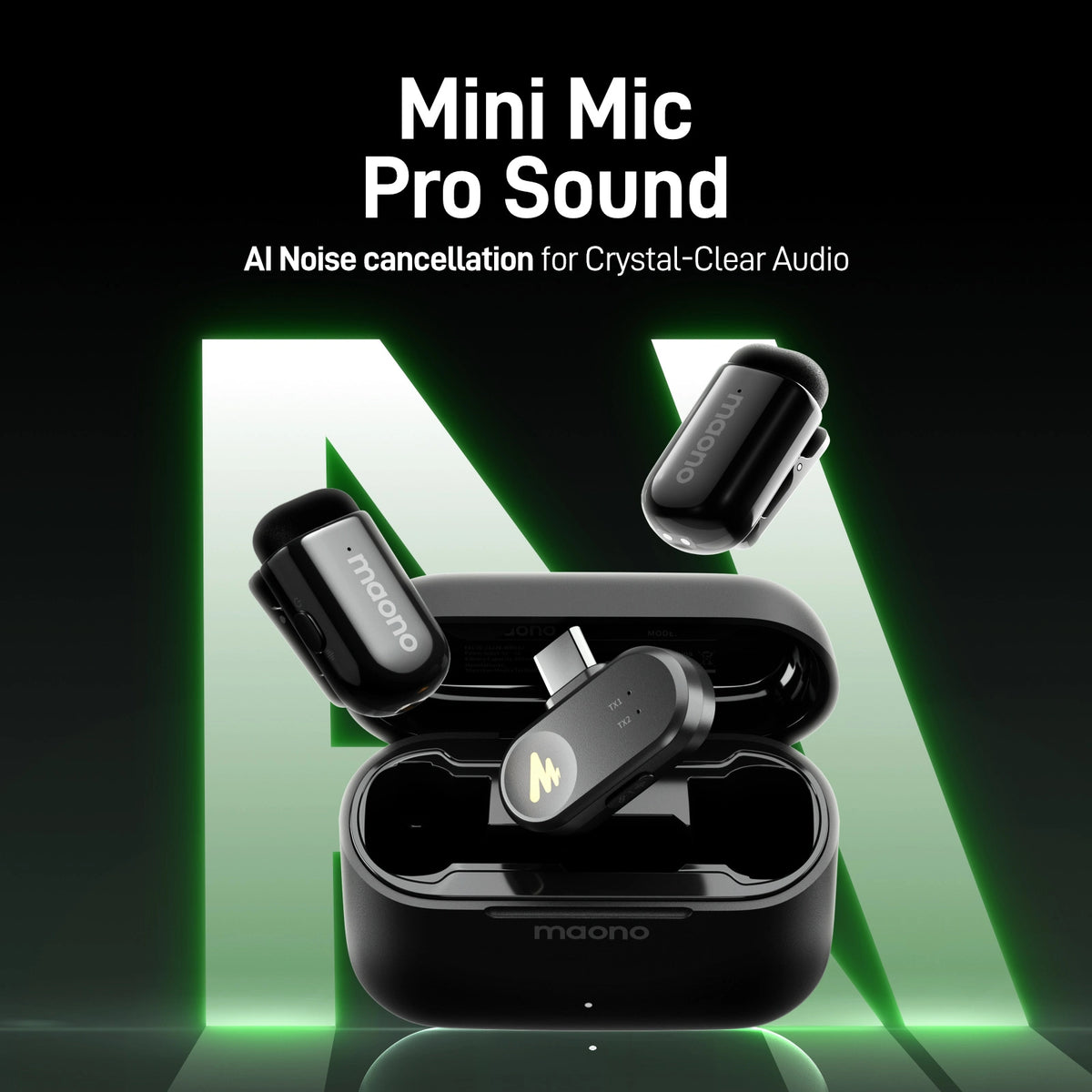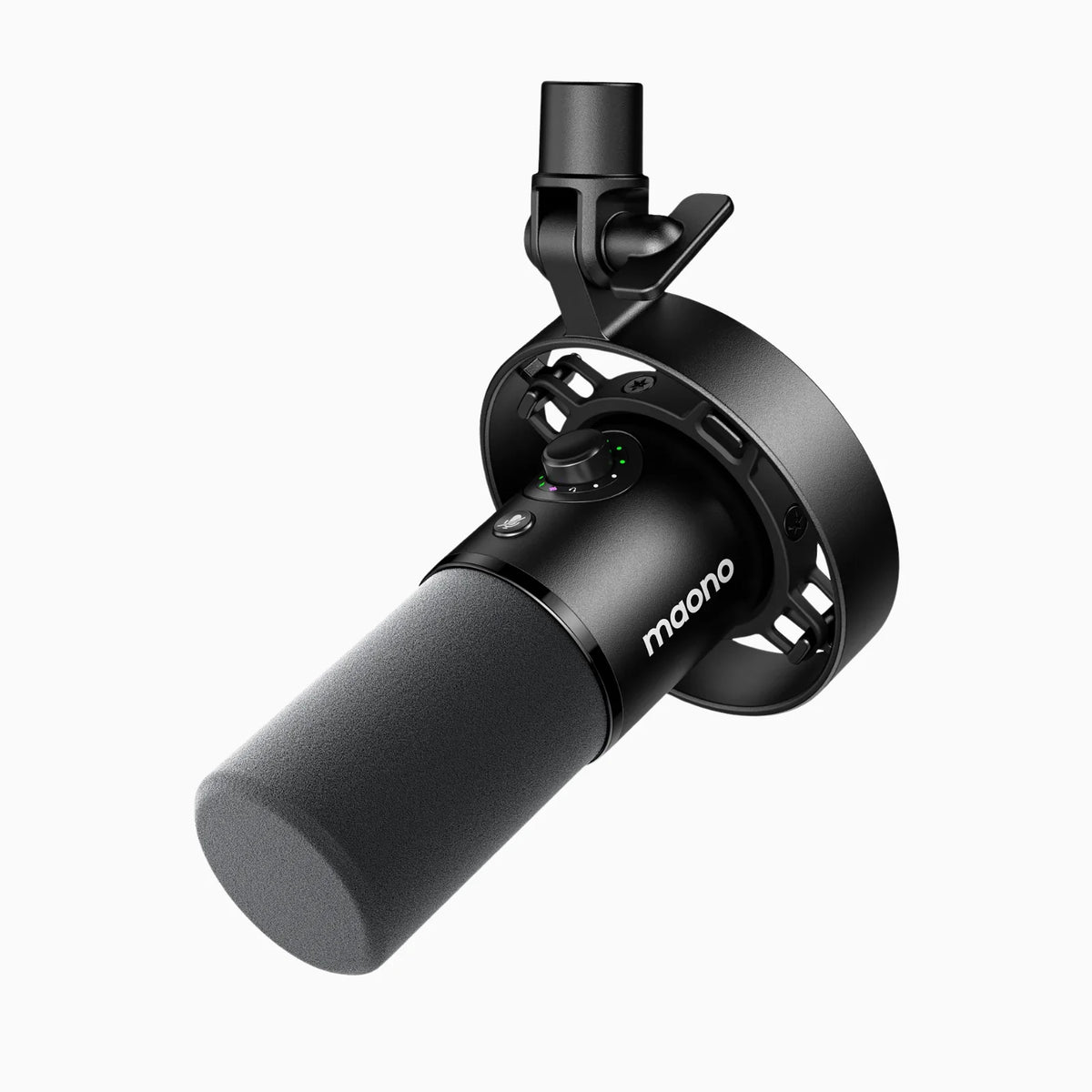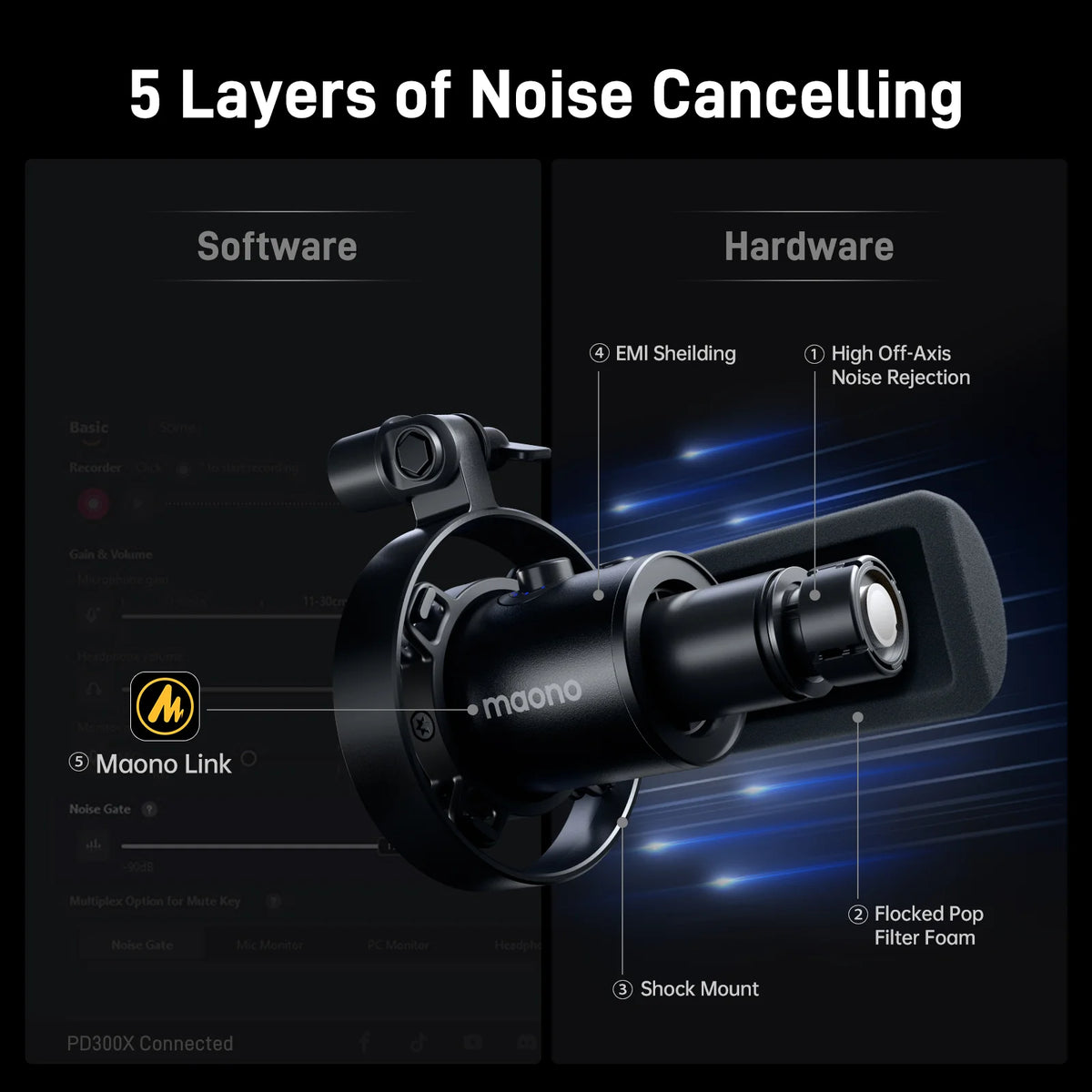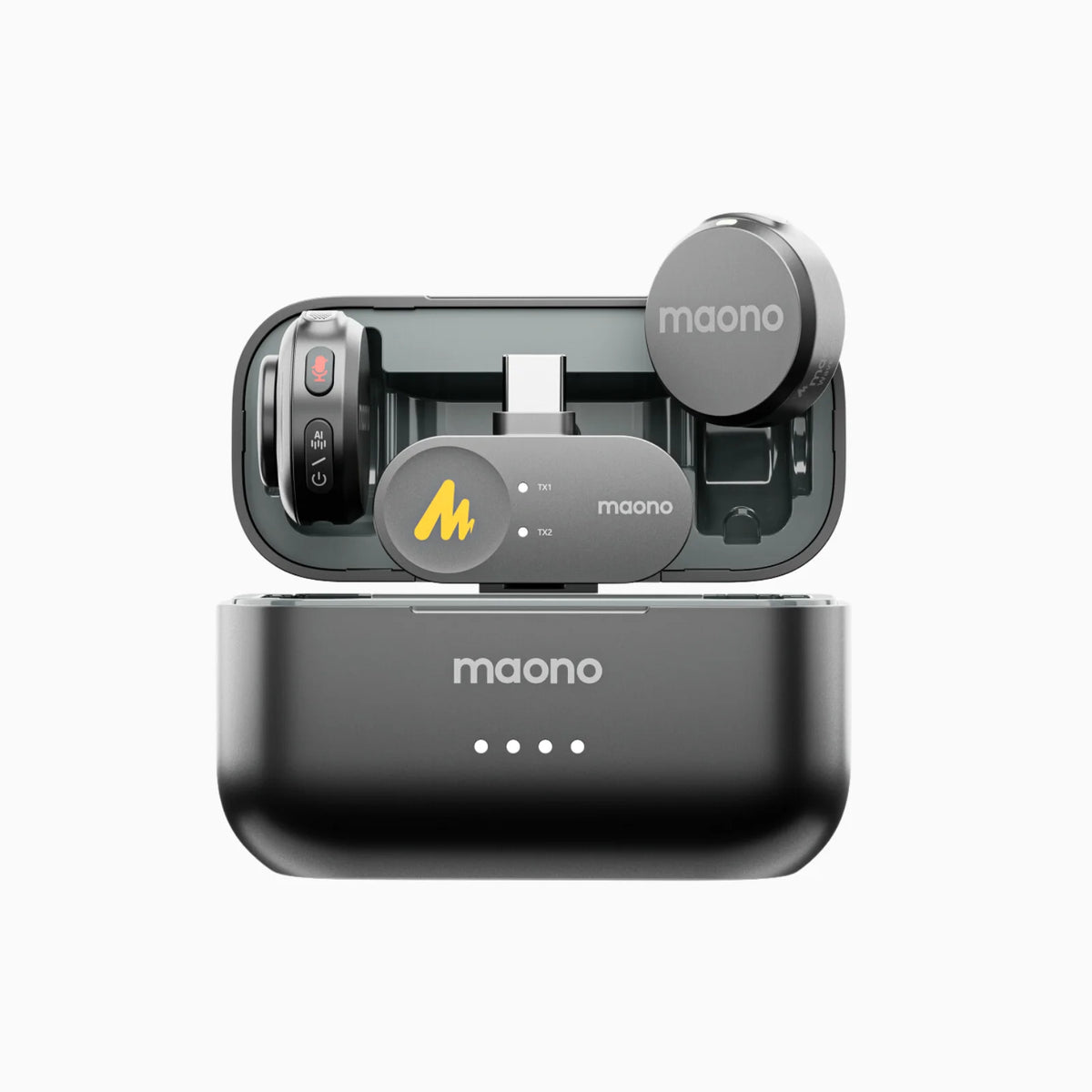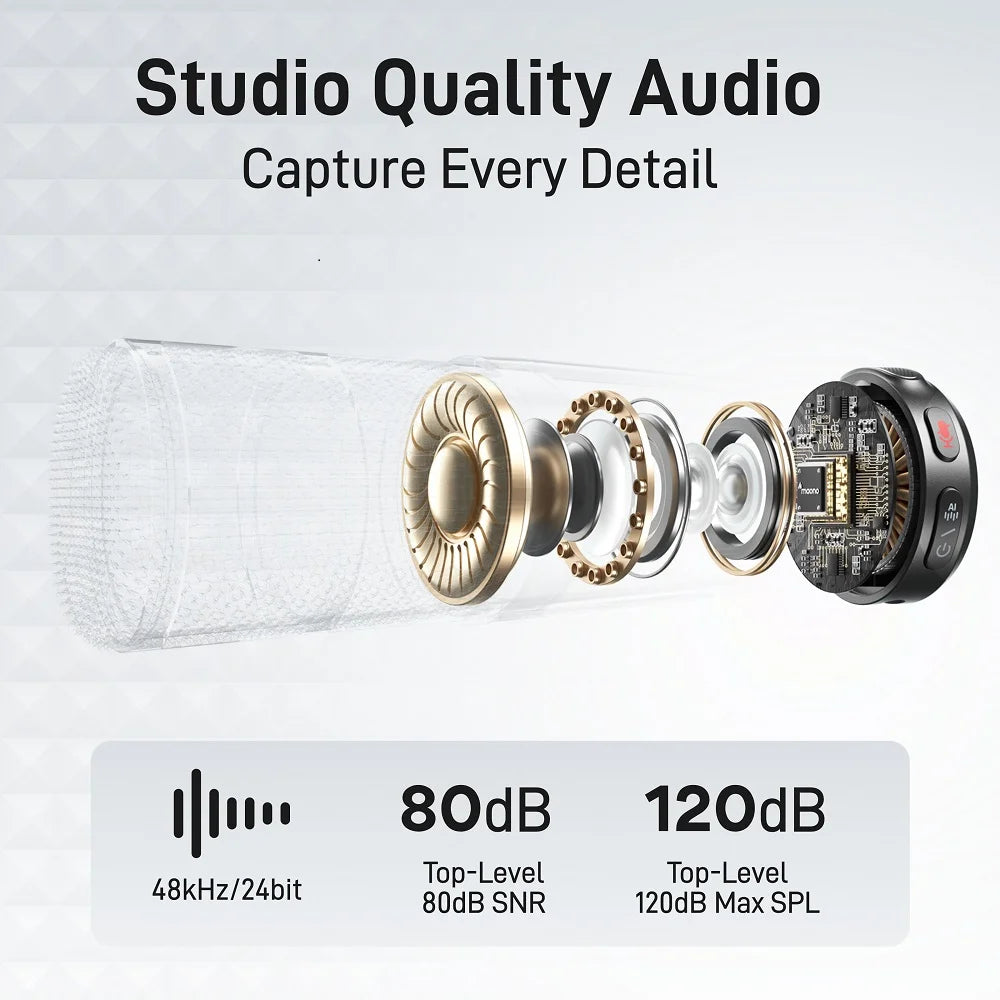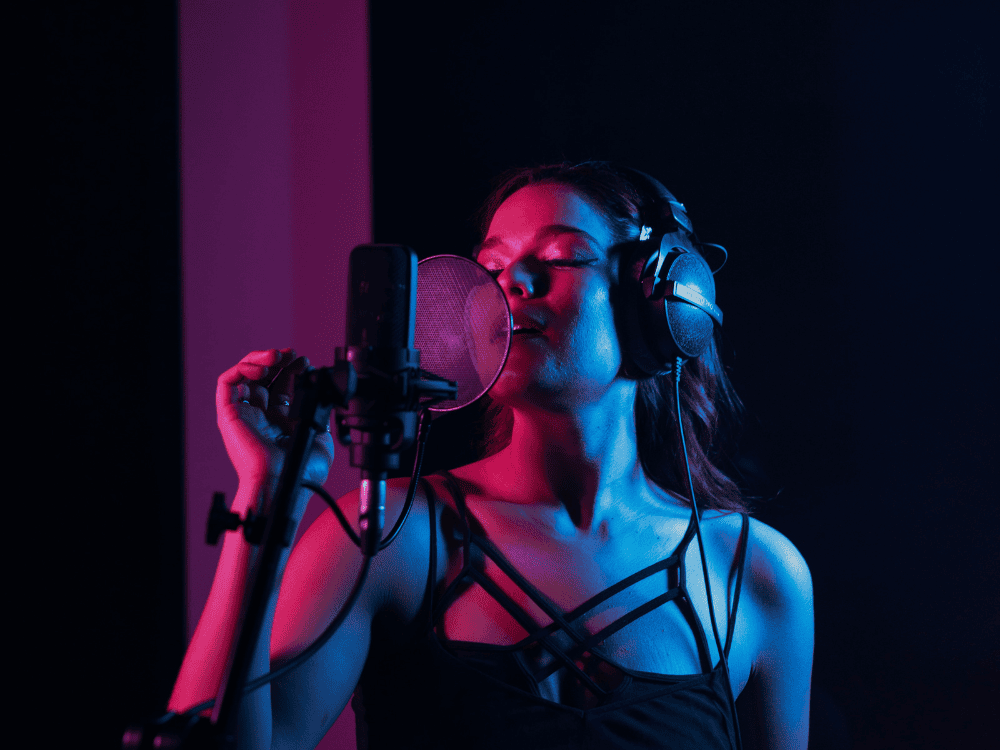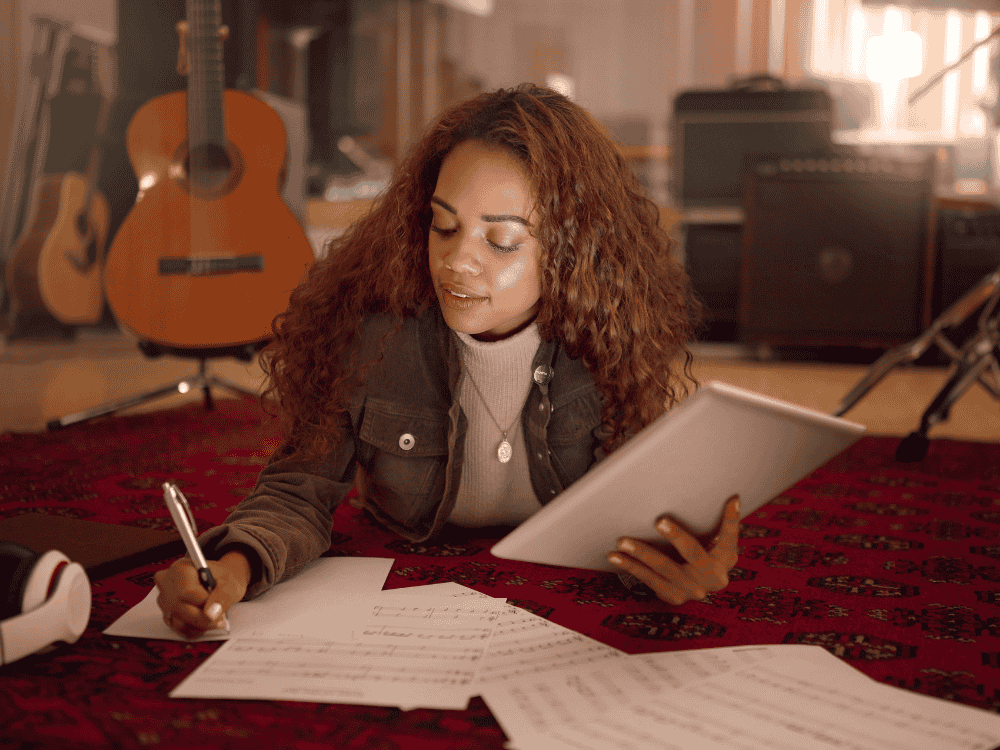Introduction to Vocal Recording
Choosing the best vocal recording mic is crucial for achieving professional-quality sound in your home studio. As a professional vocalist, I understand the importance of capturing the perfect sound in a professional or home recording studio. The quality of your vocal recordings can make or break a song, which is why choosing the best condenser microphone for home recording or professional studio use is crucial. In this article, I will guide you through the process of selecting the best singing mic for recording vocals, helping you achieve professional results every time.
Which type of microphone is best for vocals?
Most people might be confused about what type of microphone is best for recording vocals. Generally, condenser microphones are often recommended for studio voice recordings. Due to their sensitivity and low self-noise, condenser mics are excellent at capturing the subtleties of a vocal performance.
Importance of Choosing the Right Condenser Microphone
When it comes to vocal recording, the microphone you use plays a significant role in shaping the final outcome. A condenser microphone is the preferred choice for capturing vocals due to its ability to faithfully reproduce the nuances and details of your voice. It offers a wide frequency response and high sensitivity, allowing for clear and accurate recordings. This makes selecting the best microphone for home recording vocals essential for achieving top-notch results.
Using a high-quality condenser microphone ensures that your vocals are captured with exceptional clarity and presence. It brings out the subtleties and dynamics of your voice, adding depth and dimension to your recordings. Whether you're a professional singer or a home recording enthusiast, investing in a good condenser microphone will elevate the quality of your vocal recordings to a whole new level.
Understanding Condenser Microphones
Before diving into the world of condenser microphones, it's important to have a basic understanding of how they work. Unlike dynamic microphones, which use a moving coil to generate an electrical signal, condenser microphones rely on a charged diaphragm and a backplate to convert sound waves into electrical signals.
What is the best frequency response for a singing mic?
A microphone with a frequency response ranging from approximately 80 Hz to 15 kHz is a good choice for vocal mics. However, for snare and tom miking, you'll be looking for a lower range starting around 50 Hz, while for bass drum mics you'll want 40 Hz or even lower, down to 30 Hz.
Condenser microphones offer a much wider frequency response and higher sensitivity compared to dynamic microphones. This makes them ideal for capturing vocals, as they can accurately reproduce the full range of your voice, from the low-frequency warmth to the high-frequency clarity. Vocal recording requires a more professional sound environment. Selecting the best recording vocal microphone is a hard question for most beginners who’d like to try recording at home or studio.
Top Features to Look for in the Best Vocal Recording Mic
Consider the following features when searching for the best vocal recording mic:
1. Sensitivity
Sensitivity measures how well a microphone picks up sound. For vocal recording, a mic with high sensitivity is crucial because it captures the nuances and subtle details of your voice. This is especially important for studio environments where you want to capture every inflection and tone. Look for microphones with a sensitivity rating that matches the dynamic range of your voice to ensure detailed and accurate recordings.
2. Frequency Response
Frequency response refers to the range of sound frequencies a microphone can capture. A wide frequency response ensures that both low and high frequencies are recorded clearly. For vocals, a mic with a frequency response range of around 20Hz to 20kHz is generally ideal. This range captures the full spectrum of the human voice, from deep lows to bright highs, resulting in a more natural and rich sound.
3. Polar Patterns
The polar pattern of a microphone describes its sensitivity to sound from different directions. For vocal recording, a cardioid polar pattern is often preferred. Cardioid mics pick up sound primarily from the front, minimizing background noise and reducing feedback from other sources. This pattern ensures that your vocals are the focal point, making it ideal for recording in both studio and home settings.
4. Build Quality and Design
While not always discussed, the build quality and design of a microphone also play a role in its performance. A well-built mic with a robust design will provide consistent results and withstand regular use. Features such as shock mounts and pop filters can further enhance recording quality by reducing vibrations and plosive sounds.
Considering these key factors—sensitivity, frequency response, polar patterns, and build quality will help you be well-equipped to choose a microphone that delivers outstanding vocal recordings. Whether you’re a professional singer or a home studio enthusiast, selecting the right mic ensures your vocals are captured with clarity and precision.
Factors to Consider When Choosing a Condenser Microphone for Vocals
When selecting a condenser microphone for vocal recording, there are several factors to consider. The first is the polar pattern. Cardioid microphones are the most commonly used for vocals, as they focus on capturing sound from the front while rejecting unwanted sounds from the sides and rear. This helps minimize background noise and ensures a clean recording.
Another important factor to consider is the frequency response of the microphone. Look for a condenser microphone that has a balanced and extended frequency range, allowing your vocals to shine in all registers. Additionally, pay attention to the self-noise level of the microphone. Lower self-noise ensures a cleaner recording with minimal interference.
Best Professional Vocal Recording Microphones
What are the best mic for recording vocals? Now that we have covered the basics, let's explore some of the best condenser microphones for professional vocal recording. These microphones have consistently proven themselves in the industry and have been praised for their exceptional performance.
The location of our vocal recording affects the sound quality. Recording in a studio is beneficial because it typically includes sound-absorbing materials that help achieve the best recording effect. If we record in the studio, it can provide a relatively good sound-absorbing material to maximize the real recording effect. Therefore, a relatively professional microphone is needed to support the recording. For most novice users, they generally like to record songs at home. If the requirements for sound quality are relatively high, you can try the recommended PM500T microphone. Regular novice users can use PM422 and DM30RGB USB microphones, and the results are also good.
- Best microphone for vocal recording at studio
Maono PM500T XLR Condenser Microphone: Best Condenser Mic for Vocals
As a professional-grade XLR condenser microphone designed for singing and vocal recording, music creation, and sound productions. PM500 XLR microphone can always easily capture any audible sound naturally and engagingly. From the recording of the drum to the string instrument, which is always an idea choice for most creators.
User Review/Testimonial: Maono PM500T:
- Best microphone for vocal recording at home
Maono PM422 USB Condenser Microphone: Top Mic for Vocal Recording
Maono PM422 is a USB All-in-one condenser microphone Set that improves your user experience. You will feel convenient, portable, and cool to use to record anytime. if you are a beginner who just wants to start content creating, It will save you more time to think about creating a studio for recording and would be the best microphone for recording vocals at home.
Maono DM30RGB USB Condenser Microphone:DM30RGB USB condenser microphone is always a budget choice for most beginners who don't have enough budget. it is a microphone worth its price. though the price is budgeted at only $49, the sound effect comes out like the pro microphone you need, which is definitely a choice for vocal recording at home as well for most beginners.
Other Special Mentions: Best Microphones for Singing
Here are the contenders for the best condenser microphones for professional vocal recording:
1. Rode NT1
Frequency Response: 20 Hz - 20 kHz
Polar Pattern: Cardioid
Connectivity: XLR
Output Impedance: 100 ohms
Sensitivity: -29 dB re 1V/Pa (35.5 mV @ 94 dB SPL)
✅ Pros: Low self-noise, high sensitivity, warm sound
❌ Cons: Requires external power (phantom power), not portable
Price: Approximately $270
Notable Features: Extremely low self-noise (4.5dBA), high sensitivity
The Rode NT1 is known for its incredibly low self-noise and high sensitivity, making it ideal for studio recording, especially vocals and acoustic instruments.
2. Elgato Wave 3
Mic Type: Condenser
Frequency Response: 70 Hz - 20 kHz
Polar Pattern: Cardioid
Connectivity: USB
Output Impedance: N/A (USB mic)
Sensitivity: N/A (USB mic)
✅ Pros: Integrated digital mixer, easy setup, good sound quality
❌ Cons: Limited frequency response, primarily for streaming/podcasting
Price: Approximately $150
Notable Features: Clipguard technology, Wave Link software integration
The Elgato Wave 3 is designed for streamers and podcasters, offering excellent integration with streaming software and a built-in digital mixer for easy audio control.
3. AKG C414 XLII
Frequency Response: 20 Hz - 20 kHz
Polar Pattern: 9 patterns (including cardioid, omnidirectional, figure-8)
Connectivity: XLR
Output Impedance: 200 ohms
Sensitivity: 23 mV/Pa (-33 dBV)
✅ Pros: Versatile polar patterns, high sensitivity, robust build
❌ Cons: Expensive, complex for beginners
Price: Approximately $1,100
Notable Features: Multiple polar patterns, high dynamic range
The AKG C414 XLII is highly regarded for its versatility in the studio, offering multiple polar patterns and exceptional sound quality for a variety of recording applications.
4. Audio Technica AT2020
Mic Type: Condenser
Frequency Response: 20 Hz - 20 kHz
Polar Pattern: Cardioid
Connectivity: XLR
Output Impedance: 100 ohms
Sensitivity: -37 dB (14.1 mV) re 1V at 1 Pa
✅ Pros: Affordable, solid build, good sound quality
❌ Cons: No onboard controls, requires phantom power
Price: Approximately $100
Notable Features: High SPL handling, low self-noise
The Audio Technica AT2020 is a popular entry-level condenser microphone, known for its affordability and reliable performance in home studios.
5. Audio-Technica AT2035
Mic Type: Condenser
Frequency Response: 20 Hz - 20 kHz
Polar Pattern: Cardioid
Connectivity: XLR
Output Impedance: 120 ohms
Sensitivity: -33 dB (22.4 mV) re 1V at 1 Pa
✅ Pros: High SPL handling, built-in high-pass filter, pad switch
❌ Cons: Requires phantom power, slightly higher price than AT2020
Price: Approximately $150
Notable Features: Switchable 80 Hz high-pass filter, 10 dB pad
The AT2035 offers enhanced features over the AT2020, including a high-pass filter and a pad, making it more versatile for different recording scenarios.
6. Aston Microphones Origin
Frequency Response: 20 Hz - 20 kHz
Polar Pattern: Cardioid
Connectivity: XLR
Output Impedance: 200 ohms
Sensitivity: 23.7 mV/Pa
✅ Pros: Unique design, excellent sound quality, built-in pop filter
❌ Cons: Slightly higher noise level than some competitors
Price: Approximately $300
Notable Features: Wave-form mesh head, built-in pop filter
The Aston Origin is known for its distinctive look and high-quality sound, with a built-in pop filter and unique wave-form mesh head for added durability.
7. AKG C214
Frequency Response: 20 Hz - 20 kHz
Polar Pattern: Cardioid
Connectivity: XLR
Output Impedance: 200 ohms
Sensitivity: 20 mV/Pa (-34 dBV)
✅ Pros: Affordable alternative to C414, robust build, good sound quality
❌ Cons: Single polar pattern, lacks some advanced features of C414
Price: Approximately $400
Notable Features: Integrated suspension, high SPL handling
The AKG C214 offers a more affordable option for those seeking the quality of the C414, with a single cardioid pattern and durable design.
8. Behringer C-1
Mic Type: Condenser
Frequency Response: 40 Hz - 20 kHz
Polar Pattern: Cardioid
Connectivity: XLR
Output Impedance: 100 ohms
Sensitivity: -33 dBV/Pa
✅ Pros: Very affordable, decent build quality, good for beginners
❌ Cons: Higher self-noise, limited frequency response
Notable Features: Low price, solid metal construction
The Behringer C-1 is an entry-level condenser microphone, offering decent performance for beginners on a budget.
9. Rode NTK
Mic Type: Tube Condenser
Frequency Response: 20 Hz - 20 kHz
Polar Pattern: Cardioid
Connectivity: XLR
Output Impedance: 200 ohms
Sensitivity: -38 dB re 1V/Pa (12 mV @ 94 dB SPL)
✅ Pros: Warm, rich sound, high SPL handling
❌ Cons: Requires external power supply, expensive
Price: Approximately $530
Notable Features: Hand-selected twin-triode 6922 tube, internal capsule shock mounting
The Rode NTK is a tube condenser microphone known for its warm and rich sound, ideal for studio vocals and instruments.
10. Samson C01
Mic Type: Condenser
Frequency Response: 20 Hz - 18 kHz
Polar Pattern: Cardioid
Connectivity: XLR
Output Impedance: 200 ohms
Sensitivity: -33 dBV/Pa (22 mV/Pa)
✅ Pros: Affordable, solid build, good sound quality
❌ Cons: Higher self-noise, less detailed than higher-end models
Price: Approximately $80
Notable Features: LED for indicating phantom power, large diaphragm
The Samson C01 is a budget-friendly condenser microphone with a solid build and decent sound quality, suitable for home studios and beginners.
11. Shure SM27
Mic Type: Condenser
Frequency Response: 20 Hz - 20 kHz
Polar Pattern: Cardioid
Connectivity: XLR
Output Impedance: 150 ohms
Sensitivity: -37 dBV/Pa (14.1 mV)
✅ Pros: Wide frequency response, Rugged construction
✅ Low self-noise
✅ High SPL handling
❌ Cons:
Higher price point
Requires phantom power
Price: Approximately $300
Notable Features: Switchable 15 dB pad
Low-cut filter to reduce low-frequency noise
Internal shock mount to reduce handling noise
The Shure SM27 is a versatile condenser microphone suitable for a wide range of recording applications. It offers a broad frequency response and low self-noise, making it ideal for capturing detailed and accurate audio. The microphone's rugged construction ensures durability, while the internal shock mount and switchable low-cut filter provide added flexibility and control in various recording environments.
Comparison of Top Condenser Microphones for Vocals
To help you make an informed decision, let's compare the top condenser microphones for vocals based on their key features and performance:
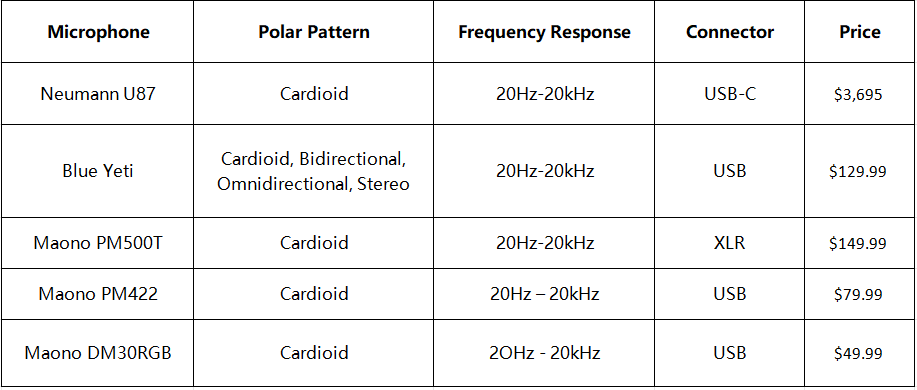
Top Condenser Microphones for Home Recording
The best condenser microphones for home recording studios include the following:
1. Rode NT1 - Known for its low self-noise and clear, warm sound, making it ideal for home recording.
2. AKG C414 XLII - Offers multiple polar patterns and is versatile, suitable for various recording needs.
3. Neumann U87 - A high-end studio standard, delivering exceptional sound quality for professional home studios.
4. Audio Technica AT2020 - Affordable and reliable, popular for its solid performance in home studios.
5. Audio Technica AT2035 - An upgrade from the AT2020, offering better noise handling and a more refined sound.
6. Aston Microphones Origin - Known for its natural sound and robust build, great for home recording.
7. AKG C214 - A more affordable version of the C414, offering excellent sound quality for vocals and instruments.
8. Rode NTK - A tube condenser microphone, offering warmth and character, ideal for high-quality vocal recordings.
9. Maono microphones like the PM500T, PM422, A04, and DM30RGB USB condenser microphones, are also most preferred by content creators for home recording. These professional condenser microphones hold a high sampling rate. They are excellent for voice-over projects, podcasting, and singing or vocals recording. These microphones are widely recognized for their performance in home recording environments, providing a balance of quality and affordability.
Why Choose a Condenser Microphone for Home Recording?
Getting studio-quality sound at home might seem tough, but using a condenser microphone can really help. Unlike dynamic mics, condenser mics are built to pick up the fine details in your voice, making them a great option for recording at home. Here are 5 reasons why choose a condenser microphone for home recording:
1. High Sensitivity and Detail
Condenser microphones are highly sensitive to sound, allowing them to pick up subtle details in your voice or instruments. This sensitivity means that even in a non-professional environment, such as a bedroom or small home studio, a condenser mic can capture the richness and texture of your vocals, preserving the nuances that bring a performance to life.
2. Wide Frequency Response
These microphones offer a wide frequency response, meaning they can accurately capture both the high and low ends of your audio. This is particularly beneficial for vocals, as it ensures that every aspect of your voice, from the deepest bass to the brightest treble, is recorded with clarity and precision.
3. Enhanced Vocal Presence
Condenser microphones are known for their ability to add presence to vocals, making them sound more upfront in the mix. This is especially useful in home recordings where the acoustics may not be ideal. The microphone’s ability to emphasize vocal clarity helps your recordings sound polished and professional.
4. Studio-Quality Sound at Home
Despite being in a home environment, condenser microphones can help you achieve a sound that rivals professional studio recordings. Their ability to capture the full dynamic range of your performance, along with their detailed frequency response, allows you to create recordings that are clean, crisp, and full of depth.
5. Versatility in Recording
Beyond vocals, condenser microphones excel in capturing various instruments, making them versatile tools in any home studio. Whether you're recording an acoustic guitar, piano, or even ambient sounds, a good condenser mic ensures that every sound is captured with clarity.
Investing in a condenser microphone for your home studio can elevate your recordings to a professional level. Their ability to capture detailed and nuanced audio, even in less-than-ideal environments, makes them an invaluable tool for anyone serious about home recording.
Common Home Recording Challenges and How a Condenser Microphone Can Help
Recording at home offers convenience and flexibility, but it also comes with a unique set of challenges that can affect the quality of your audio. Here are some of the most common issues and how a good condenser microphone can help mitigate them.
1. Room Acoustics
One of the biggest challenges in home recording is dealing with poor room acoustics. Most home environments are not acoustically treated, which means sound waves can bounce off walls, floors, and ceilings, causing unwanted reverberations and echoes. These reflections can muddy your recordings, making them sound less clear and professional.
How a Condenser Microphone Helps:
A high-quality condenser microphone is sensitive enough to capture the direct sound of your voice or instrument while minimizing the effects of room reflections. Additionally, many condenser mics come with a cardioid polar pattern, which focuses on sound coming from the front while rejecting noise from the sides and rear. This helps to reduce the impact of poor room acoustics, ensuring that your recordings are clean and focused.
2. Background Noise
Home studios are often filled with background noise, from the hum of appliances to outside traffic, or even the subtle sounds of a computer fan. These noises can easily be picked up by a microphone, especially if it lacks the sensitivity to distinguish between what you want to capture and what you don’t.
How a Condenser Microphone Helps:
Condenser microphones, particularly those with noise-canceling features or tight pickup patterns, are adept at isolating your vocals or instruments from background noise. They capture a clear, direct signal, making it easier to edit out any remaining unwanted sounds during post-production. This is especially beneficial for those recording in noisy environments where controlling ambient noise is difficult.
3. Balancing Frequency Response
In home recording, achieving a balanced frequency response can be challenging due to the uneven distribution of sound within a room. Some frequencies might be exaggerated or diminished depending on the shape and contents of the room, leading to recordings that sound unnatural or lacking in depth.
How a Condenser Microphone Helps:
A condenser microphone’s wide frequency response ensures that it captures a balanced and natural sound across the entire spectrum, from low bass notes to high treble. This means that even if your room acoustics aren’t perfect, the microphone can still deliver a recording that sounds full and accurate. Moreover, using a condenser mic allows you to take advantage of subtle EQ adjustments in post-production to further enhance the balance and clarity of your recordings.
Summary
While home recording presents challenges like poor room acoustics, background noise, and balancing frequency response, a good condenser microphone can help mitigate these issues. By investing in a quality mic, you can achieve cleaner, more professional recordings that make the most of your home studio setup.
To ensure you get the best results with your condenser microphone, follow these tips:
Tips for Getting the Best Results with a Condenser Microphone
To get the best results from your condenser microphone in a home recording environment, it’s essential to optimize your setup. Here are some key tips to help you achieve professional-quality recordings:
Proper microphone placement/positioning: Experiment with different distances and angles to find the sweet spot that captures your vocals in the most flattering way. Proper microphone positioning is crucial for capturing the best sound. Start by placing the microphone at a height that aligns with the sound source, whether it’s your mouth or an instrument. If you're recording vocals, position the microphone slightly off-center from your mouth to reduce plosive sounds (like "p" and "b" sounds). The distance between the microphone and the sound source typically ranges from 6 to 12 inches, depending on the desired sound and microphone sensitivity.
Use a pop filter: A pop filter helps reduce plosive sounds and ensures a clean and clear recording. It's especially important when recording vocals with strong consonant sounds. A pop filter is a simple yet essential tool for recording vocals. It acts as a barrier between your mouth and the microphone, helping to reduce plosive sounds that can cause distortion in your recordings. Attach the pop filter a few inches away from the microphone and directly in front of your mouth. This ensures that your recordings are clear and free of unwanted pops and hisses.
Monitor your recording levels: Keep an eye on the recording levels to avoid clipping or distortion. Adjust the gain on your audio interface or preamp accordingly. Setting the correct gain level is vital to avoid clipping (distortion caused by too much input signal) or recording at too low a volume. Start by setting the gain on your audio interface or preamp to a level where your loudest sounds do not peak above 75-85% on your recording software’s meter. This leaves headroom for dynamic performances and prevents distortion. Always test your levels by performing at the volume you intend to record before starting your session.
Optimize Your Recording Space: While you might not have a professionally treated studio, you can still optimize your space to reduce unwanted noise and reflections. Place soft materials like blankets, curtains, or foam panels on walls and around the recording area to absorb sound. If possible, record in a smaller room with lots of furniture or soft items that can help diffuse sound waves, minimizing reflections and creating a warmer, more controlled recording environment.
Reduce Background Noise: Condenser microphones are sensitive to ambient sounds, so minimizing background noise is important. Turn off noisy appliances, close windows and doors, and ensure your computer fan or other electronic devices are as quiet as possible. You can also use noise reduction plugins during post-production to clean up any residual noise.
Monitor Your Recording: Use closed-back headphones to monitor your recording in real-time. This allows you to hear exactly what the microphone is capturing and make adjustments on the fly. Pay attention to any unwanted noise or distortion and tweak your setup as needed.
By carefully setting up your home recording environment, positioning your condenser microphone correctly, using a pop filter, and setting appropriate gain levels, you can achieve excellent recording quality even outside of a professional studio. These tips will help you make the most of your condenser microphone and produce recordings that sound polished and professional.
Setting up Your Condenser Microphone for Optimal Recording
Setting up your condenser microphone correctly is crucial for achieving optimal recording results. Follow these steps to ensure your microphone is properly set up:
Tips on Maintaining and Caring for Your Condenser Microphone
FAQs
Frequently Asked Questions About Microphones for Vocals
1. What do you need in a vocal mic?
When selecting a vocal microphone, consider the following factors:
Type: Condenser microphones are often preferred for studio vocals due to their sensitivity and accuracy. Dynamic microphones are more sturdy and are commonly used for live performances.
Frequency Response: Look for a mic with a frequency response that suits the type of voice and genre of music. A flat response is versatile, while a tailored response can enhance certain vocal qualities.
Polar Pattern: Cardioid is the most common polar pattern for vocals as it focuses on sound from the front and rejects noise from the sides and rear.
Sensitivity: Higher sensitivity allows the mic to pick up more detail but may also capture more background noise.
Connectivity: XLR is standard for professional mics, offering better sound quality and reliability. USB mics are convenient for home recording and podcasting.
Build Quality: Durable construction ensures longevity, especially for live performance microphones.
Notable Features and Accessories: Consider features like built-in shock mounts, pop filters, and switches for low-cut filters and pads.
2. What Microphone do Singers Use in the Studio?
In studios, singers typically use condenser microphones due to their sensitivity and ability to capture detailed audio. Some popular choices include:
- Neumann U87: Known for its versatility and high-quality sound.
- AKG C414 XLII: Offers multiple polar patterns and high sensitivity.
- Rode NT1: Favored for its low self-noise and affordability.
3. What Singing Mics do Most Artists Use?
The choice of microphone can vary widely among artists, but some popular and frequently used microphones include:
- The AKG C414 XLII: Chosen for its versatility and ability to capture detailed vocals.
- The Maono PM422 is an excellent choice for recording vocals at home due to its ease of use, all-in-one set, high-quality condenser microphone, user-friendly features, portability, and affordability. These attributes make it particularly well-suited for beginners looking to start content creation without the need for extensive additional equipment or technical expertise.
4. How to find the best mic for recording vocals?
Finding the best mic for recording vocals involves considering the following steps:
- Step#1 Identify Your Needs
Determine whether you need a mic for studio recording, live performance, or both. Also, consider the type of voice (e.g., soprano, tenor) and genre of music.
- Step#2 Research and Reviews
Read reviews and watch video demonstrations of different microphones. Pay attention to feedback from users with similar needs.
- Step#3 Test Mics
If possible, test microphones at a local music store to hear how they sound with your voice.
- Step#4 Consider Your Budget
Set a budget and find the best microphone within that range. Remember that higher price doesn't always mean better quality for your specific needs.
- Step#5 Look for Versatility
A mic with features like switchable polar patterns, built-in filters, and pads can be more versatile for different recording situations.
- Step#6 Consult Professionals
Seek advice from audio engineers, producers, or other musicians who have experience with vocal recordings.
- Tip#7 Check Specifications
Ensure the microphone has the technical specifications (e.g., frequency response, sensitivity) that match your recording environment and vocal style.
By carefully considering these factors, you can find a microphone that best suits your vocal recording needs.
Conclusion: Finding the Perfect Condenser Microphone for Your Vocal Recording Needs
Singing mics, such as condenser microphones, are the best for vocal recording because they offer high sensitivity and a wide frequency response, capturing the subtle nuances and details of the voice. Their low self-noise and ability to pick up a broad range of frequencies make them perfect for achieving a clear and professional vocal sound.
Choosing the right condenser microphone for vocal recording can greatly impact the quality and professionalism of your recordings. By understanding the importance of selecting the best microphone, you can achieve exceptional results. Consider the factors discussed in this article, explore the recommended microphones, and follow the tips provided to master the art of vocal recording. With the right condenser microphone in your arsenal, your vocal recordings will reach new heights of clarity, detail, and emotion.
Related Readings:
Budget USB Microphones for Your Home Studio Recording
How to Achieve Professional USB Recording at Home: Best USB Microphones for Voice




